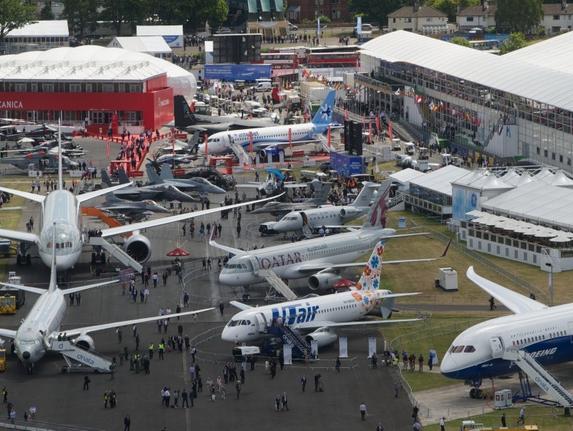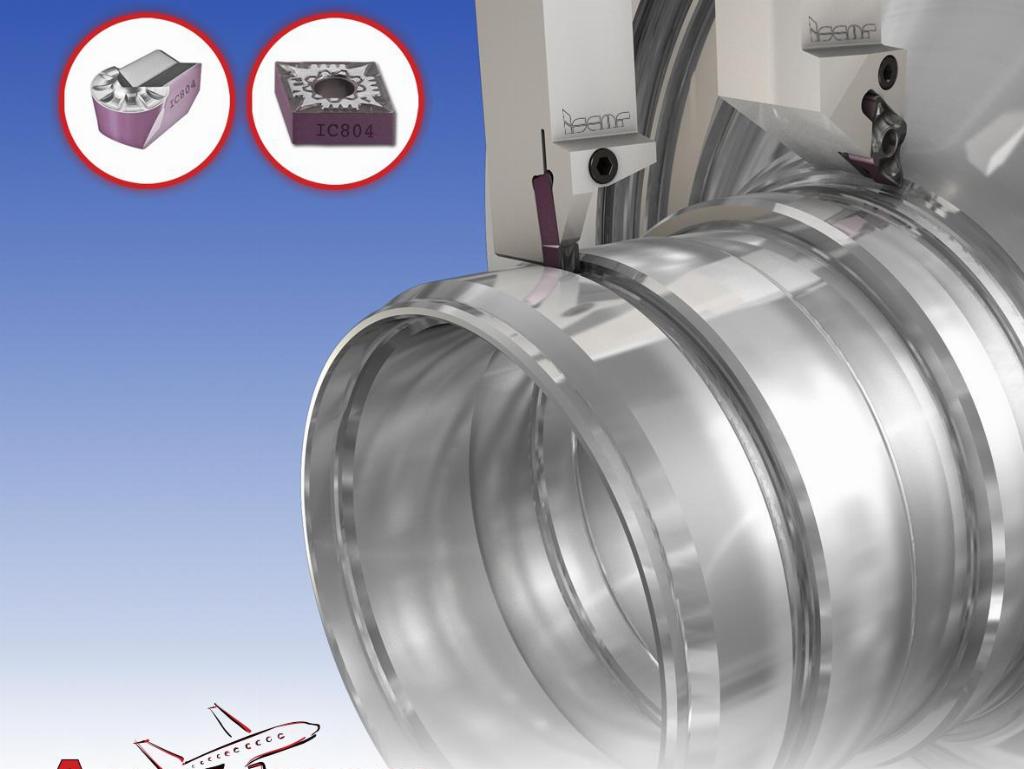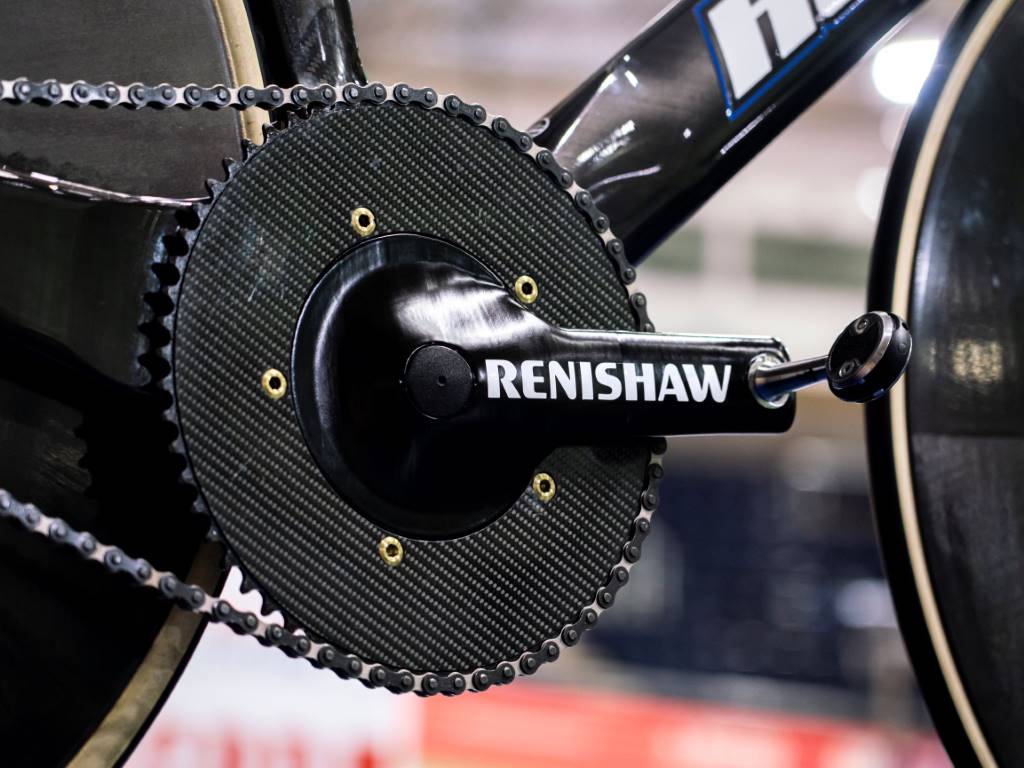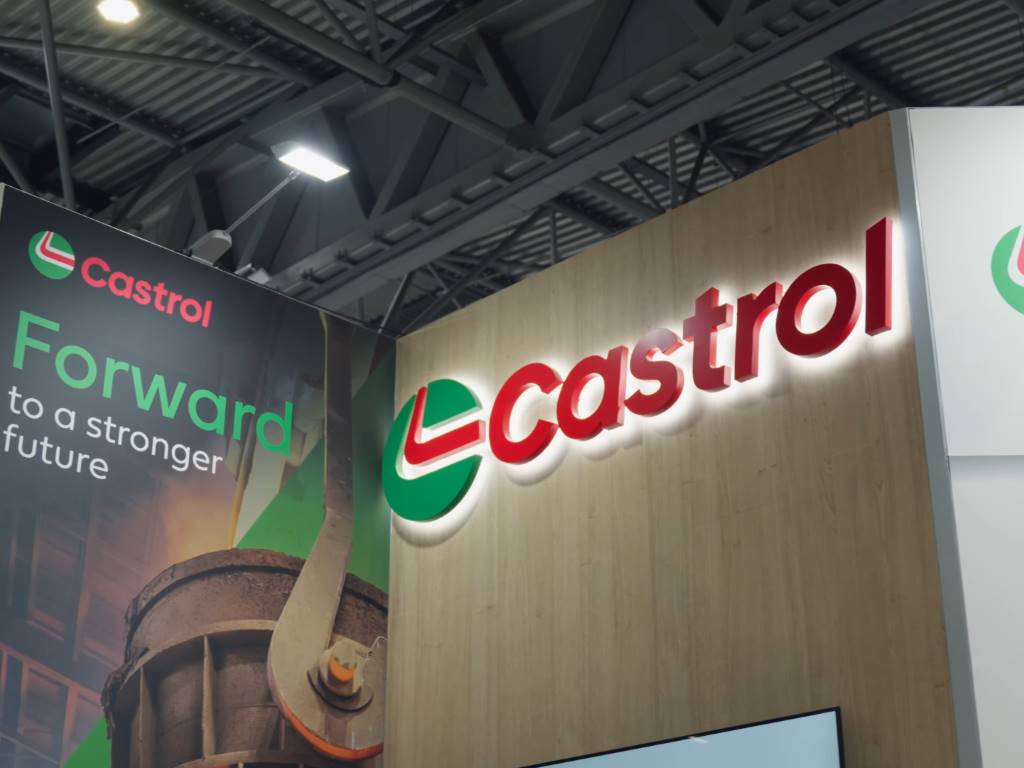Added up Net Zero engineering

In this article GKN Aerospace discusses why it is developing additive manufacturing to help solve the environmental impact of flying. Ed Hill reports.
The drive to Net Zero emission targets is not only going to radically change the aircraft that we fly in but also the technology needed to make them.
To meet targets such as the Government’s Jet Zero strategy which aims to achieve Net Zero carbon emissions by 2050, aerospace manufacturers will have to continue the development of ever lighter and more efficient aerostructures. However, more challenging, will be the advancement of new power sources such as hydrogen combustion and hydrogen-electric engines to substantially reduce the amounts of COâ‚‚ and nitric oxide (NOX) gases emitted by aircraft.
GKN Aerospace is a major supplier in the aerospace industry, in fact it describes itself a ‘super’ Tier 1 company, which is a reasonable claim considering it supplies parts and components to every major aerospace OEM, both in the military and civil aviation sectors. Indeed, it says that its aerostructures, engine systems and special products can be found on more than 100,000 flights every day.
When it comes to the future of metallic aero part production, GKN is putting much of its focus on additive manufacturing (AM), particularly a technology termed wire-based laser metal deposition (LMD-w) a form of direct energy deposition (DED) that it has been developing for the last 20 years.
Similar to welding, LMD-w uses a laser to melt a feedstock of metal wire which is deposited onto a metallic substrate in the shape of the required part. This is done layer-by-layer until a near net shape is complete. It is then finish machined, and if required surface finished, to finally complete the process.
It is also used as a method of repairing or adding metal material onto parts. The feedstock wire can be supplied in a range of different metal types and alloys. Because of its rapid rate of construction, LMD-w is more suited to larger parts as opposed to complex small structures where metal powder bed fusion is usually a better AM alternative.
At a recent press briefing, GKN Aerospace outlined the progress it was making with this metal additive technology.
“Over the last 20 years we have started to really understand and characterise what you need to do in terms of controlling the process to get different properties,” comments Russ Dunn, chief technology officer and head of strategy at GKN Aerospace.
An early partner in this research journey was the Swedish company Permanova Lasersystem, which was acquired by GKN in 2022 to help further develop productionisation of the process.
“In terms of production, we started in 2008 with relatively simple structures such as bosses on engine fan cases,” Mr Dunn continues. “These are certified and flying today, but over the years we have been broadening the scope of the AM parts that can be certified and put into production. These are load bearing components such as ducts, fan cases, mounts and other structures.”
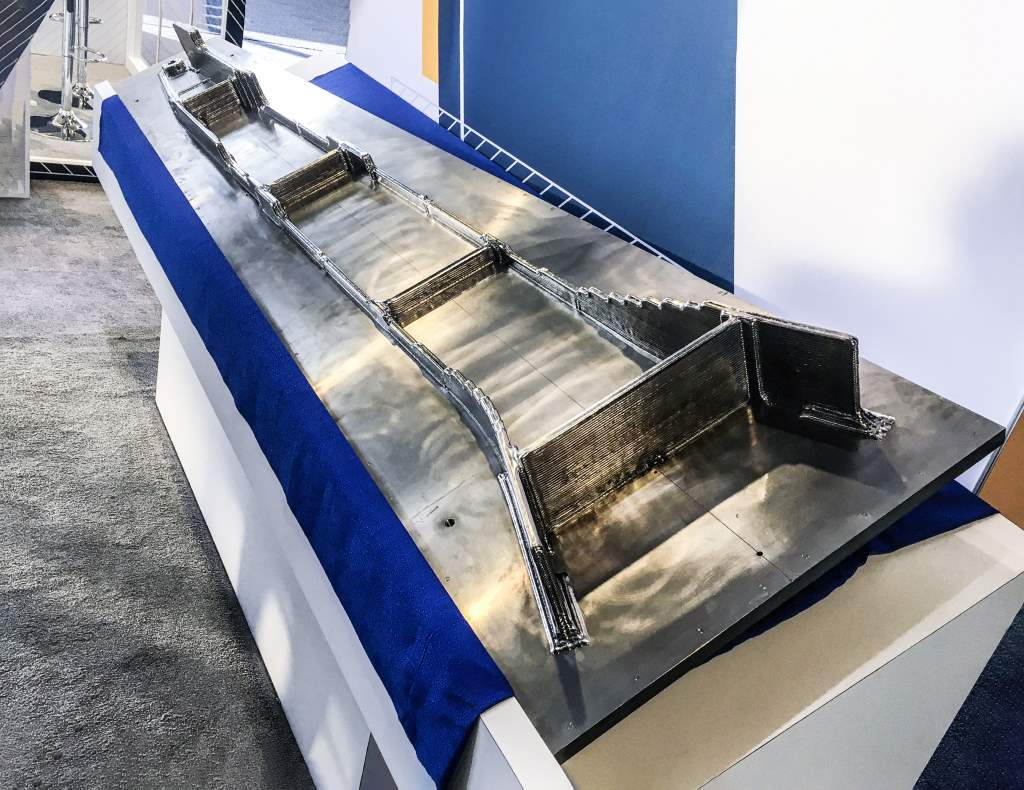
Ringing the changes
A recent example is a fan case mount ring for an aero-engine which GKN decided to develop making additively with LMD-w.
“Normally this part is made using a very large block of titanium. It is then heated and formed into a ring,” Mr Dunn explains. “You then machine about 90% of that away – in approximate terms, a 440kg block of titanium is machined down to less than 40kg. As we know, titanium is not only an expensive material but it is also difficult to process when machining. Moreover, a lot of energy is expended during this process, both in the heating, forming and machining.
“With additive manufacturing it's a very different approach. We take a thin circular sheet of titanium and then add to it using LMD-w. We significantly reduce the material and energy we use and the emissions we produce making it.”
Manufacturing this way also reduces scrap, reliance on other suppliers providing materials and shipping and delivery times, significantly reducing lead-times. It also enables design changes to be made more easily, reducing the time to develop new iterations.
With its additive approach GKN says it has certified the additive process as much as the end part itself.
“The way we conventionally manufacture aircraft engine parts is to make them from billets,” Mr Dunn continues. “Because those billets are produced hundreds of thousands of times there's a lot of data to prove that each billet will be the same as the next in terms of its strength and characteristics. This means you can guarantee the properties of that material over and over again.
“With AM, when you deposit material, the actual properties of the metal you deposit can change as you build it. For example, how the laser temperature interacts with the wire, the size of the melt pool, the speed at which it heats up, cools down or the geometry and features of the part – all these contribute and interact to change the metallurgy of the material throughout its structure.
“So, with AM you need extensive knowledge and data that allows you to understand every single variable in your process. It means you have to monitor how the material will be deposited, what properties you want to achieve as you deposit it and ultimately achieve the design intention to make sure it functions as it should.”
Once made by GKN’s certified additive process, the part can then be approved to wider industry and customer requirements.
Mr Dunn says now that GKN has proven the LMD-w process on parts such as the fan case mount ring, it has reached a “tipping point” with customers now keen to apply it to other parts.
“Over the next three or four years there is a whole series of products that we've agreed to manufacture additively. These are existing aircraft structures that we are transforming from old style manufacturing processes into an additive equivalent.”
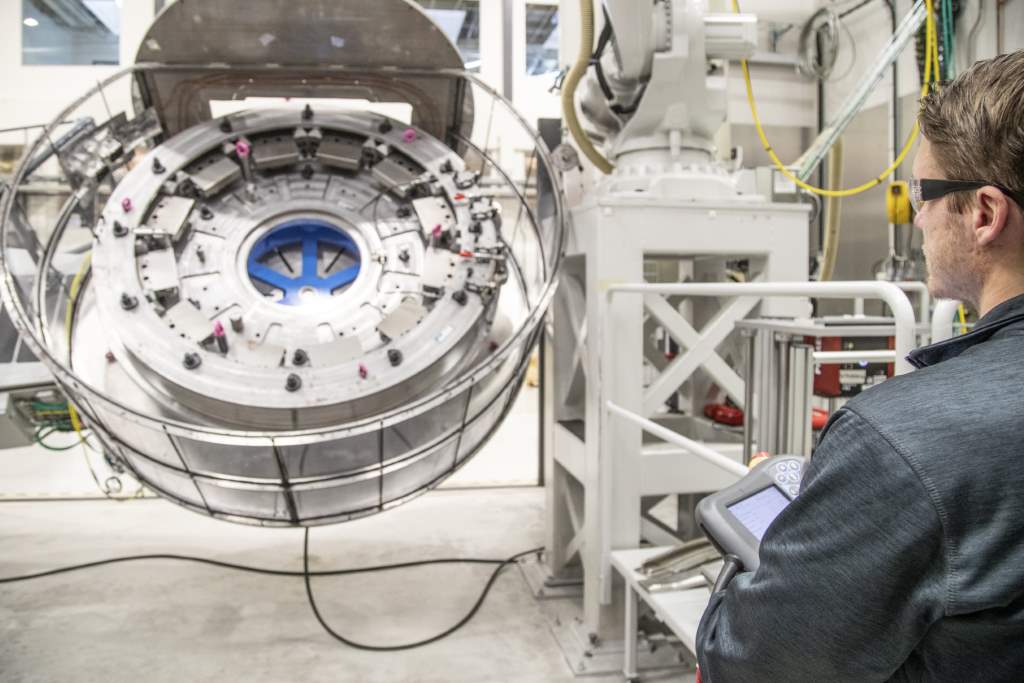
Design for additive
In these examples, AM is used to make parts that originally would have been designed with older subtractive machining processes in mind. However, when it comes to the next generation of power sources such as electric, hydrogen combustion, and hydrogen/electric, AM parts will need to be designed in a way that takes advantage of the flexibility that additive processes offer. This will be essential if aero engine builders are going to achieve their Net Zero goals.
GKN Aerospace is already a partner on two engine programmes intended to power the next generation of single aisle aircraft. Firstly, a ducted geared turbofan engine from Pratt & Whitney that will run on 100% sustainable aviation fuel (SAF) and a more radically different unducted (propfan) engine for CFM (Safran/GE).
However, these power sources still rely on some form of combustion, even if it is using a less damaging fuel like hydrogen.
In the mid- to longer-term, GKN is progressing its preferred solution for sustainable aviation, hydrogen-electric. The H2Gear concept uses fuel cells to convert liquid hydrogen into electricity that will, ultimately be used to power the engines and other systems. As part of a collaborative project with industry, academia and government, it has worked on prototypes of a 48 and 96 seat regional aircraft that would be used for short haul journeys.
The major challenge with this technology is the cooling required to keep hydrogen in a liquid form (requiring less space for storage) and also maximising the power or voltage of the electricity needed to power the aircraft by cooling the electrical system to reduce resistance and the risk of electrical circuits arcing, a particular problem when aircraft are flying at higher altitudes.
GKN is developing a cryogenic system that will cool not only the hydrogen but the whole electrical system where resistance is only just above zero. It is now at TRL4 with the concept and hopes to have a one-megawatt ground-based demonstrator tested and operating by the end of 2025.
Future solutions
Whatever the outcome it seems that AM will play a vital role in both GKN’s engine and aerostructure manufacturing in the future. In September last year it produced its largest ever titanium part using LMD-w. Made in collaboration with Northrop Grumman at GKN’s Centre of Excellence in the US, the 2.5m structure successfully doubled the scale of previous components produced by LMD-w.
“We are now looking at the next generation of additive parts. In addition to LMD-w we also have a great deal of knowledge about metal powder bed fusion and we are looking at how these can be combined i.e. joining or combining these parts additively,” Mr Dunn concludes.
“These AM technologies give us much more design freedom. Some of the components on these new engines will look unlike anything that we would traditionally manufacture today. They will have similar functions but have very different characteristics and features. For us it will be a fantastic opportunity to learn more about these processes.”
GKN Aerospace
www.gknaerospace.com


